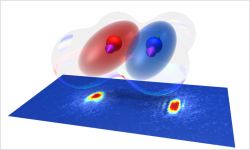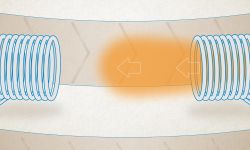
The experimental investigation of ultracold quantum matter makes it possible to study quantum mechanical phenomena that are otherwise hardly accessible. A team led by Francesca Ferlaino has now succeeded for the first time in mixing quantum gases of the strongly magnetic elements Erbium and Dysprosium and creating a dipolar quantum mixture.

Innsbruck quantum physicists have constructed a diode for magnetic fields and then tested it in the laboratory. The device, developed by the research groups led by the theorist Oriol Romero-Isart and the experimental physicist Gerhard Kirchmair, could open up a number of new applications.

The New Journal of Physics Editorial Board, the Deutsche Physikalische Gesellschaft (DPG) and the Institute of Physics (IOP) have selected Dr. Lauriane Chomaz, a young scientist in the group of Francesca Ferlaino, as the winner of the New Journal of Physics Early Career Award for 2018.

Innsbruck Physics will be funded with up to 5 million euros over the next three years for research into future quantum technologies. Scientists at the University of Innsbruck and the Institute for Quantum Optics and Quantum Information of the Austrian Academy of Sciences are collaborating in five international consortia for the development of quantum computers, quantum simulators, optical clocks and a future quantum Internet.
